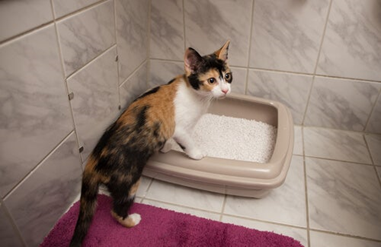
The most intimidating challenge for those people who have their first cat is to teach it to use its litter box, stress when things don’t go their way and even go as far as think that they are not made to live next to a kitten. This is normal even for experienced owners, as in the vast majority of cases, the people don’t take enough time to properly teach their children the right way. feline.
Indice
Training a cat requires patience, perseverance and interest, some cats won’t even need to be shown the box to find out what its purpose is, as well as there are others that will require a few days or weeks to understand it. To meet this challenge with the For best results, it is essential that the person knows the 3 tips to train your cat to use its litter box.
Human intervention
The role of the individual in training is key, not only because it is in charge of such vital elements as the cashbox, but also because it is and cleanliness, but also by the reinforcement of the sand, its location and presence can be given to the kitten. Positive reinforcement every time the cat does something well is of great importance, since this is what will end up securing the new learning in your mind. The kitten will know that what it is doing is well and will want to continue to do so in order to receive cuddles.
In contrast, when training a cat , negative reinforcement must be eliminated at all costs. Yelling at him, hitting or forcing it will only cause the cat to develop fear, both of the sandbox as its owner, making it impossible to make any progress, as well as the possibility of a positive relationship between the two.
The sandbox
One of the main reasons why many cats refuse to use a litter box because they are not comfortable with it. with this one. This may be due to the inadequacy of the box, either because of its size or height, that the sand used is uncomfortable or irritating to them, a poor location or lack of cleanliness. If all these elements do not coincide with what the cat wants or needs, the cat will most likely refuse to use the box so receive all the awards in the world.
In order to properly comply with all of these requirements the person must analyze certain elements of his or her home and the kitten itself. At As far as the crate is concerned, the bigger the better, even if it is a puppy. Cats need space to move around and position themselves to relieve themselves, so a small box is uncomfortable for them. However, it is important to make sure that the cat can climb into the box on its own.
In the case of sand, the following are not recommended and those of the agglomerating type, since they can be either a danger as an irritating factor for the feline. The amount of sand to should range from 5cm to 10cm, the quantity varies according to the cat and litter box size.
The location of the box should be strategic, being in a place that is not very crowded and where the cat can have privacy, but be easily accessible to it.
Routine.
Routine is the key to success for any training, including teaching a cat to use its litter box . The person should establish an eating routine that will allow him/her to calculate when the cat will need to go to the bathroom, also taking into consideration that some felines prefer to go after a nap or play session.
Every day, after about twenty minutes after the meal, the kitten should be brought close to the box and placed in the cats often have the need to go to the bathroom after this time. bathroom. This should also be done if you see the kitten with the intention of to relieve themselves elsewhere.
Training success is assured once the cat associates the litter box with the need to go to the bathroom, and always that it is not uncomfortable or threatening.
Image courtesy of (en.lovetoknow.com), all rights reserved.







